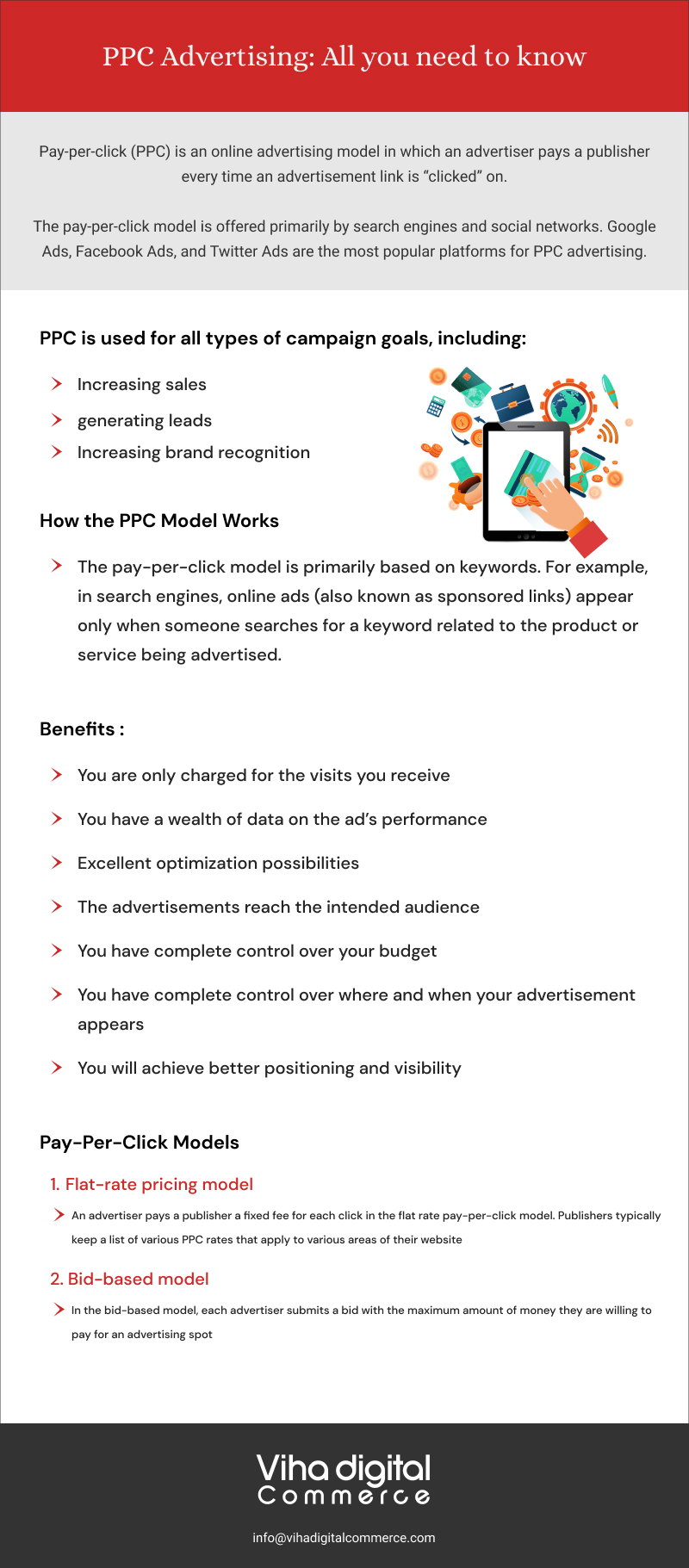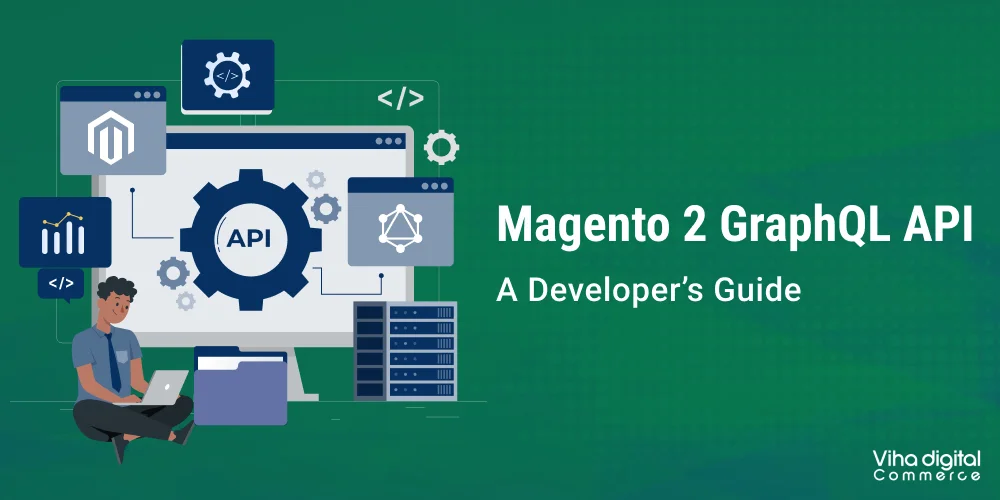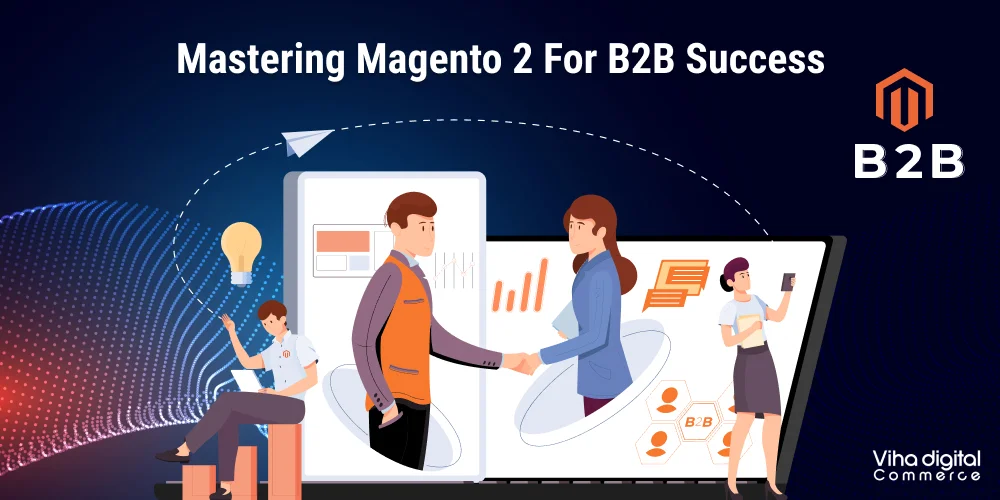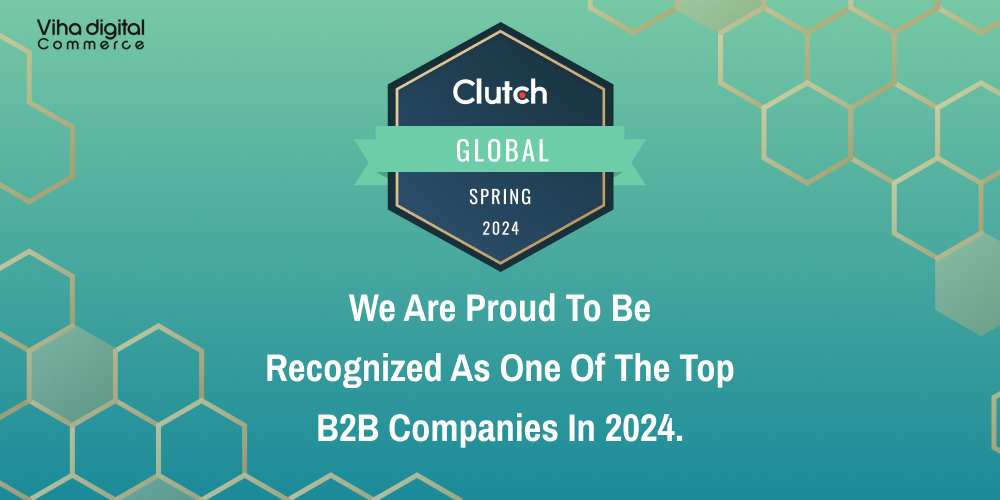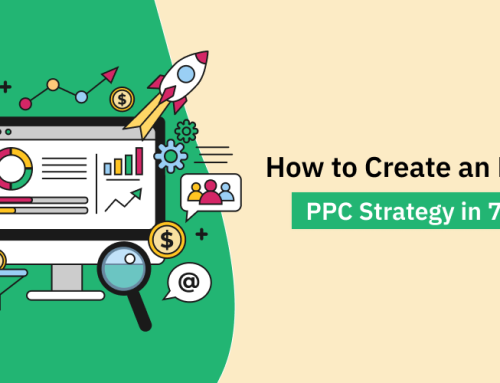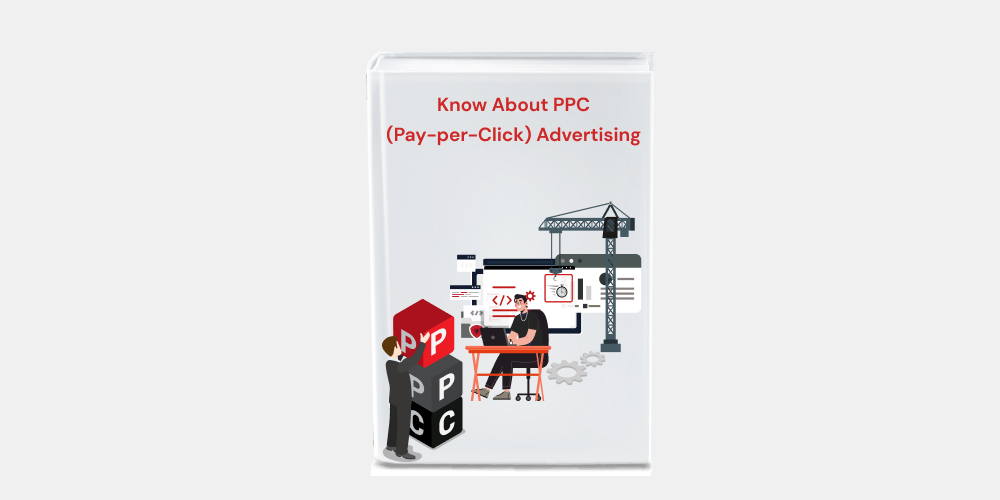
All you need to know about PPC Pay Per Click Advertising
Pay-per-click (PPC) is an online advertising model in which an advertiser pays a publisher every time an advertisement link is “clicked” on. Alternatively, PPC is known as the cost-per-click (CPC) model. The pay-per-click model is offered primarily by search engines (e.g., Google) and social networks (e.g., Facebook). Google Ads, Facebook Ads, and Twitter Ads are the most popular platforms for PPC advertising.
The Basics
PPC is used for all types of campaign goals, including:
- Increasing sales
- Generating leads
- Increasing brand recognition
PPC is all about relevance. Users are constantly looking for specific products, services, and information. Advertisers can show a targeted ad at the exact moment this search occurs.
How the PPC Model Works
The pay-per-click model is primarily based on keywords. For example, in search engines, online ads (also known as sponsored links) appear only when someone searches for a keyword related to the product or service being advertised.
As a result, businesses that use pay-per-click advertising models research and analyze the keywords that are most relevant to their products or services. Investing in relevant keywords can result in more clicks and, eventually, higher profits.
The PPC model is thought to benefit both advertisers and publishers. The model is advantageous for advertisers because it allows them to advertise products or services to a specific audience actively searching for related content.
Furthermore, a well-designed PPC advertising campaign allows an advertiser to save a significant amount of money because the value of each potential customer visit (click) exceeds the cost of the click paid to a publisher.
The pay-per-click model is a primary source of revenue for publishers. Consider Google and Facebook, both of which offer free services to their customers (free web searches and social networking). Online businesses can monetize their free products through online advertising, particularly the PPC model.
Benefits Of PPC Services
You are only charged for the visits you receive
In other advertising models, advertisers pay a fee to have their ad displayed but have no guarantee that it is producing results. There is a direct relationship between cost and performance when using pay-per-click (visits).
You have a wealth of data on the ad’s performance
The pay-per-click platforms provide the advertiser with detailed information about the advertisement’s performance, including the number of impressions, clicks, and conversions.
Excellent optimization possibilities
With all of this data, it is very simple to determine whether an ad is working or not and to correct the course in real-time. In fact, the best strategy is to create multiple variations of each ad and compare them to see which ones perform the best. You will always get better results this way.
The advertisements reach the intended audience
You won’t waste a single click thanks to the numerous segmentation options. The ad will only be shown to the users you want to target. This produces better results because a user who is part of the target audience is more likely to click on the ad. The lower the ad cost, the higher the percentage of clicks.
You have complete control over your budget
PPC models allow you to set a daily maximum budget, and in some cases, you can start with as little as $1. This means they can be tailored to advertisers of all sizes, and you can budget for each campaign ahead of time.
You have complete control over where and when your advertisement appears
You can show your ads on many different platforms and locations using the pay-per-click model and choose the ones that interest you the most. Some websites also allow you to select the days and times when your ads will appear.
You will achieve better positioning and visibility
Thanks to the PPC, you can show your ads on some of the sites most visited by users, such as search engines, and social networks.
Pay-Per-Click Models
The flat-rate model or the bid-based model is commonly used to determine pay-per-click advertising rates.
1. Flat-rate pricing model
An advertiser pays a publisher a fixed fee for each click in the flat-rate pay-per-click model. Publishers typically keep a list of various PPC rates that apply to various areas of their website.
It should be noted that publishers are generally open to price negotiations. If an advertiser offers a long-term or high-value contract, the publisher is very likely to lower the fixed price.
2. Bid-based model
In the bid-based model, each advertiser submits a bid with the maximum amount of money they are willing to pay for an advertising spot.
The publisher then conducts an auction using automated tools. When a visitor clicks on an ad spot, an auction is held.
It is important to note that the winner of an auction is generally determined by rank, not the total amount of money offered.
The rank takes into account both the amount of money offered and the quality of the content offered by an advertiser. As a result, the relevance of the content is as important as the bid.
Why choose us?
If you are seeking affordable PPC packages for your Adobe Commerce store, then you are at the right place.
Viha Digital Commerce Ltd offers affordable PPC packages for Magento, Shopify, and WordPress e-commerce stores.
So what are you waiting for?
Call us now at info@vihadigitalcommerce.com and get details about the diverse PPC packages offered by us.
Thank you.
editor's pick
Harnessing the Power of Magento 2 GraphQL API: A Developer’s Guide
In the dynamic world of e-commerce, efficient and flexible [...]
Unlocking the Potential of Magento 2 B2B: A Comprehensive Guide
In the world of B2B e-commerce, having a robust, [...]
Viha Digital Commerce Gets Recognized as Clutch Global Leader for Spring 2024!
It is a privilege for Viha Digital Commerce to be named [...]
